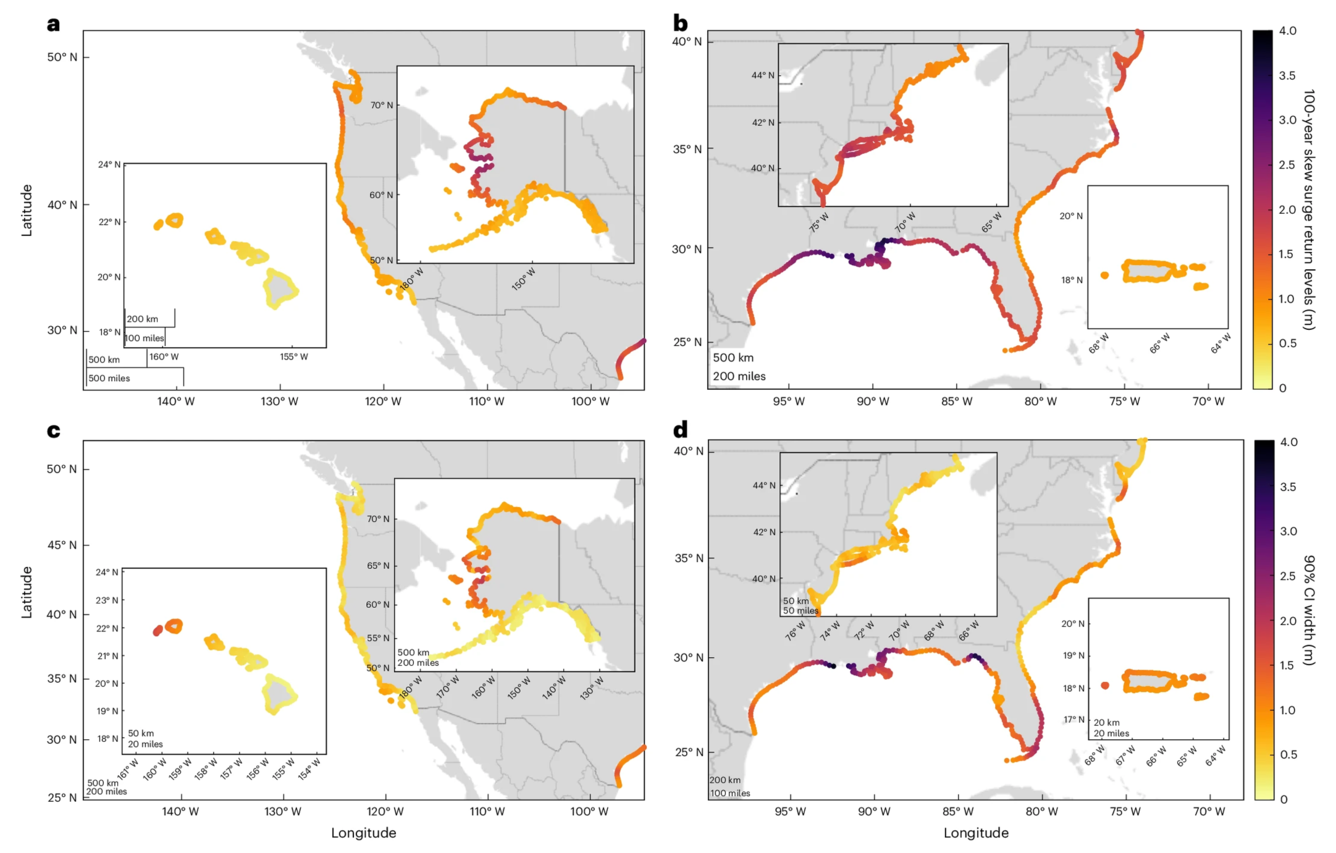Frequency and Intensity of Storm Surges Underestimated Nationally, Study Finds
Coastal communities around the world face increasing threats from storm surges—intense rises in sea level caused by powerful storms pushing water ashore. A new study using advanced statistical modeling and historical sea-level observational data shows that the likelihood of these events occurring is much higher than previously estimated along U.S. coasts.
Underestimating the Threat
Storm surge occurs when the observed water levels during a storm exceed predicted tidal levels, often leading to severe coastal flooding. To be able to protect coastal communities from those events, coastal managers need to know how likely it is that certain water level thresholds could be exceeded, as well as whether storm surge extremes are becoming more extreme over time.
To do this, researchers utilized an innovative statistical modeling approach based on observational records dating back to 1950, finding that many coastal regions are exposed to more intense and/or frequent events than once believed. The study suggests that traditional methods for estimating the likelihoods of extreme storm surges have underestimated hazards levels at 85% of tide-gauge sites nationwide.
Regional Shifts in Storm Surge Intensity
Beyond simply reassessing probabilities, the study also found unprecedented and significant regional changes in storm surge extremes since the mid-20th century. This contrasts with current beliefs that no robust changes in storm surge extremes can be detected after removing mean sea-level changes from historical tide gauge observations. The study shows that while some coastal regions have experienced an increase in the intensity of storm surges, others have seen a decline. This, combined with sea-level rise, leads to changes in coastal flooding risk which are important to take into consideration when planning coastal flood protection measures. These shifts suggest that changing climate patterns, ocean currents, and other environmental factors are influencing storm behavior in ways that require further study.
Implications for Coastal Protection
The findings come at a crucial time when policymakers and urban planners are working to bolster defenses against rising sea levels and extreme weather events including major hurricanes. The combination of increasing storm surge extremes and ongoing sea level rise means that many coastal areas will face heightened flood risks in the coming decades. The study emphasizes the urgent need for improved coastal flood protection strategies that take these new risk assessments into account.
“The days of assuming a stable climate in coastal engineering design are over,” said Joao Morim, a coastal risk scientist at the University of Central Florida and lead author of the study. “While sea-level rise has rightfully taken center stage, our findings show that increasing storm intensity can rival its impacts in some U.S. regions.”
As extreme weather events become more frequent due to climate change, understanding and preparing for storm surges will be vital for safeguarding lives, infrastructure, and economies in vulnerable coastal regions.
Read the study, Observations reveal changing coastal storm extremes around the United States, in Nature Climate Change.




